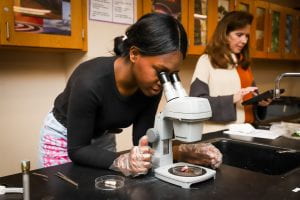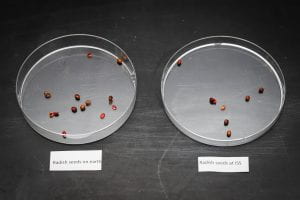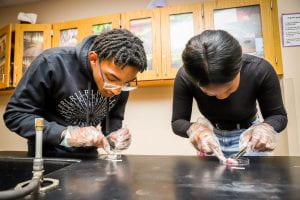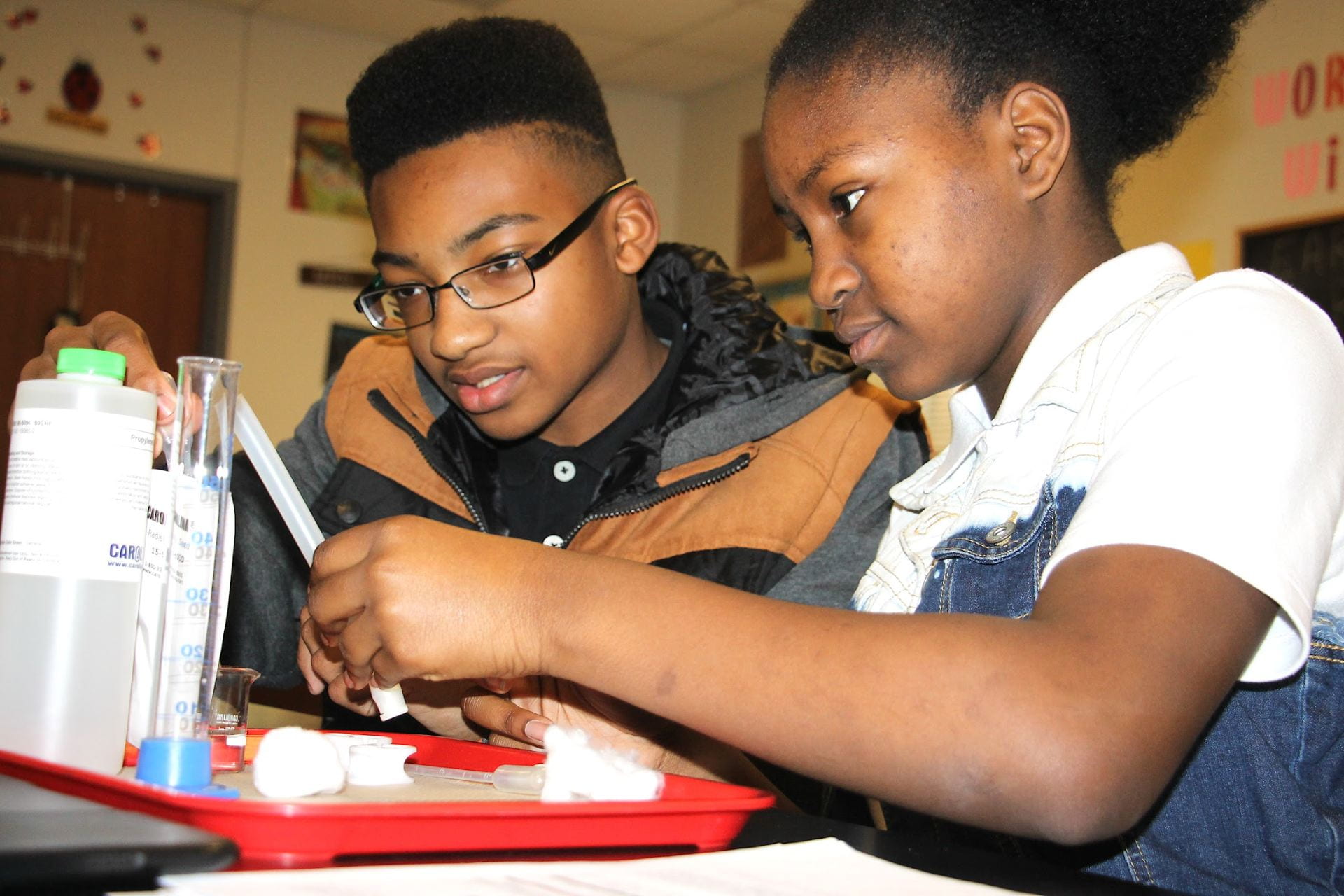
Abdeel and Shariah (then in seventh grade) prepare their experiment for the trip to the ISS. PHOTO BY: SHEILA ADAMS/Lufkin ISD
“I was excited and nervous,” said Lufkin High School sophomore Shariah Jackson. “We have been doing this project since we were in the seventh grade and now, we are in the tenth grade.
“It has been a long time and several attempts, so I was just ready to see if our hypothesis worked.”
And it did. When Shariah Jackson and Abdeel McGrew were in middle school, their project was selected for testing on the International Space Station (ISS) in the Student Spaceflight Experiments Program (SSEP) Mission 14 to the ISS. Their experiment ‘Can Radish Seeds Develop in Microgravity?’ aimed to determine if radish seeds could germinate in weightlessness. Lufkin Middle School 7th grade STEM-Prep teacher, Amy Rush, facilitated the program as it corresponded to the seventh-grade science curriculum.
The experiments traveling to the ISS had to follow strict constraints with one of those being that the experiment must fit into a very small container called a Fluid Mixing Enclosure (FME). The Lufkin team prepared two FME labs, one for the ISS, and the other to stay on Earth.
The project start date was Sept. 2019, but with the pandemic and flight cancellations it finally flew to the International Space Station on Space X-26 on Nov. 22, 2022 returning to Earth on Jan. 11, 2023.
The students were able to harvest the radish seeds on Jan. 31, 2023 with the following conclusions: Three seeds germinated, seven seeds did not on Earth. Two seeds germinated, eight seeds did not on the ISS.
“I wish we could have given them a little more time to germinate,” said Abdeel. “It shows sustainability of food source on the ISS.”
Radish seeds germinate within 10 days with a crop maturing within 22 to 70 days.
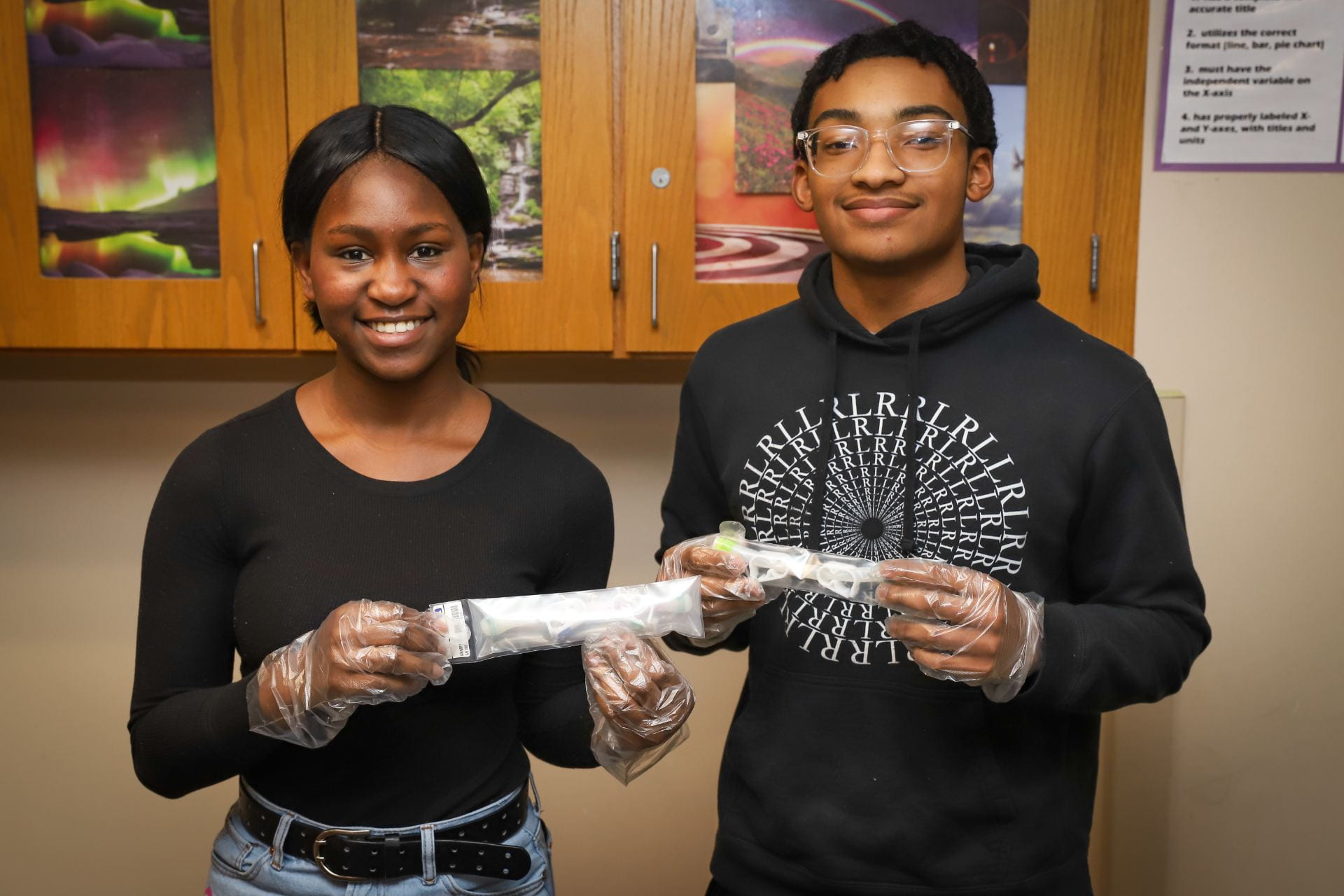
Shariah and Abdeel (now in tenth grade) holding their experiment that has returned to Earth from the ISS.
Shariah was expecting at least half of the seeds to germinate but she said there were many challenges with the lab such as the limited lighting and the possibility of one of the substances leaking that could have changed the outcome.
She said, “The challenge that we cross when doing a project such as this one can lead to a new discovery and advancement in our current space technology and research.”
STEM-Prep teacher Amy Rush was excited to get the results back.
“As a teacher, it was very rewarding to see my students work through a complex project that presented more than a fair share of challenges,” said Rush. “There were several obstacles the students faced during this project, from changing one of our experiment samples because it was leaking while in the Nanoracks FME mini labs, to making it to space and having a malfunction occur during testing.
“It was an emotional rollercoaster, thinking at one point that we might not be able to complete the experiment, but our students rose to the challenge. We finally had a successful flight and had the experiment go to the ISS and return to Earth.
“These two students know what it means to work hard, keep trying, and never give up. I am honored to have been a part of their journey.”
When looking back at the students’ photos from the beginning of the experiment, Abdeel commented how different they looked and that he even had a different hair cut back then.
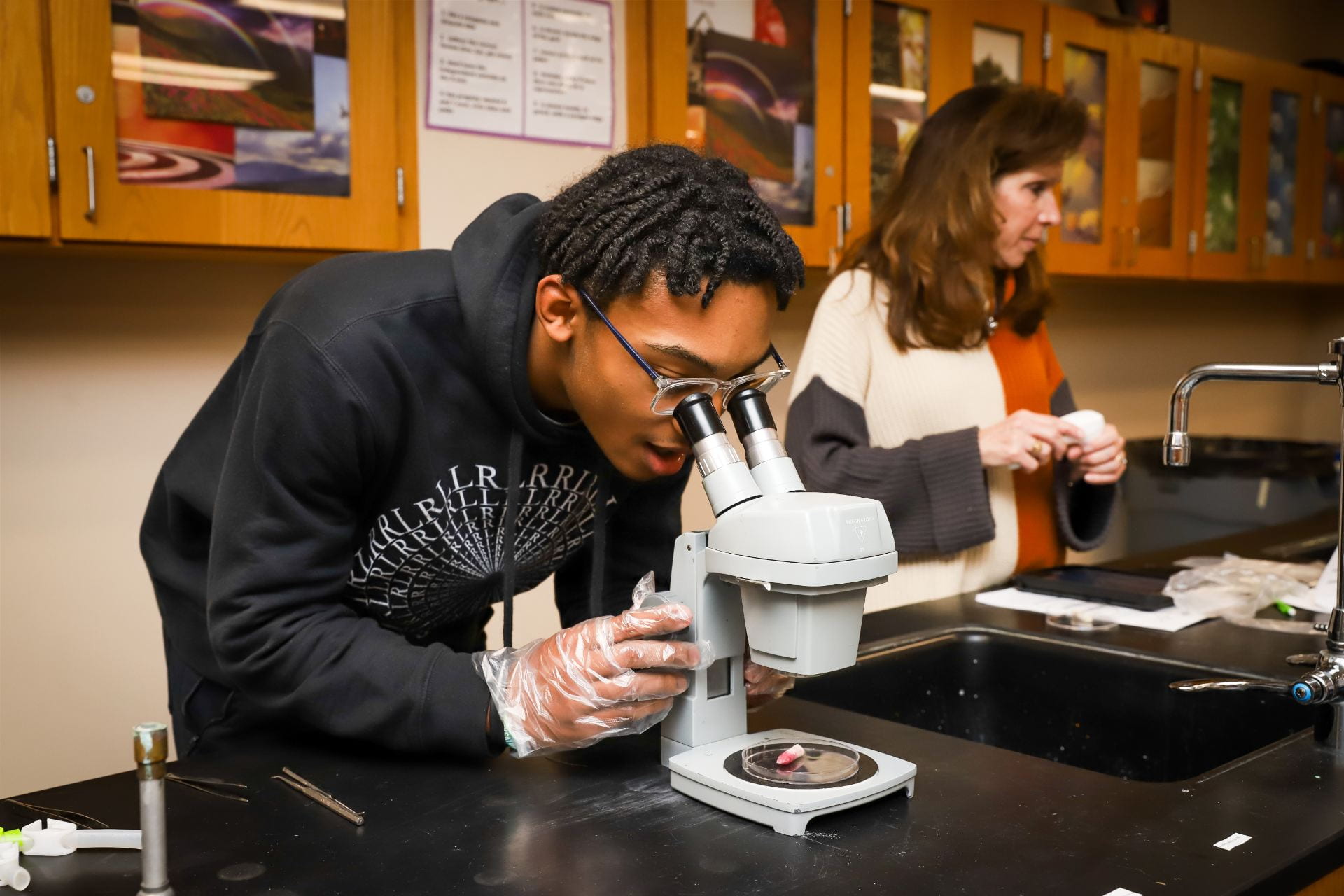 “It felt surreal especially working on this for four years. I’m glad it worked out. I am blessed to have this opportunity,” said Abdeel.
“It felt surreal especially working on this for four years. I’m glad it worked out. I am blessed to have this opportunity,” said Abdeel.
Abdeel said if he had the opportunity, he would like to go into space one day but was sure it would require a lot of training. Shariah not so much.
“I would not want to go to space because I am scared of heights, and I am too scared looking at space through VR glasses,” said Shariah.
She did however mention that she would like to major in architecture and interior design and open to the idea of designing houses for Mars “if technology allows us to live on the planet one day”.
“I am so excited that Shariah and Abdeel were able to participate in this once in a lifetime opportunity to send an experiment to the ISS which was carried out by astronauts in space,” said Suzy Jungmann, STEM Coordinator. “This is an example of STEM education at its finest. The students will remember this experience forever.”
Suzy Jungmann assisted with the planning, coordinating, and administration of the program. Dr. Dennis Gravatt, Professor of Biology from Stephen F. Austin State University served as the professional advisor and helped the students with project research and development.
The Student Spaceflight Experiments Program (SSEP) is a program of the National Center for Earth and Space Science Education in the U.S., and its International arm the Arthur C. Clarke Institute for Space Education for communities internationally. It is enabled through a strategic partnership with Nanoracks LLC, which is working with NASA under a Space Act Agreement as part of the utilization of the International Space Station as a National Laboratory.
PHOTOS BY: ANDY ADAMS/Lufkin ISD
